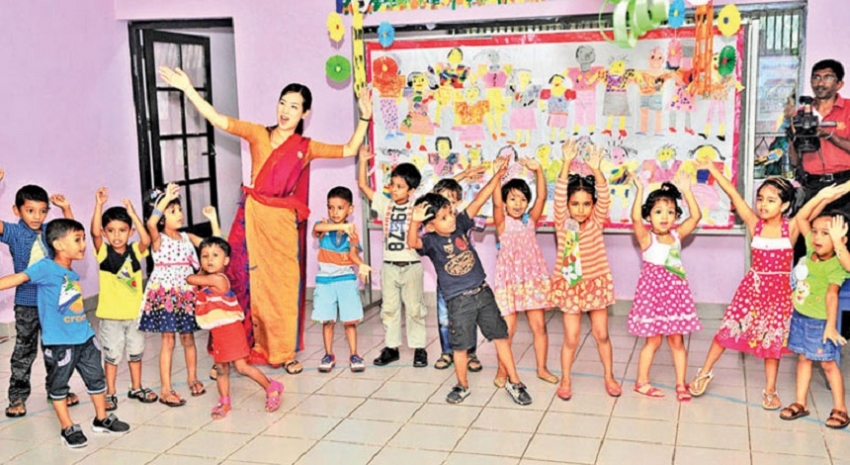Child development refers to the gradual appearance and increase in the level of complexity of skills in growing children. The skills could be broadly categorised as physical, social and emotional, language and communication, and cognitive.Physical skills refer to the children’s abilities to control their body movements. Social and emotional skills include the abilities related to engaging in relationships, showing emotions and negotiating complex emotional and social patterns. Cognitive skills include critical appraisal, problem-solving, understanding of rules and concepts, and visualising possibilities and consequences which influence how children think and what they know. Language and communication skills include the ability to understand others and express oneself using words, gestures or facial expressions.
Beginning of child development
Child development starts from birth and continues beyond the childhood period, up to around the mid-twenties. However, there is a rapid development for up to three years. The UNICEF promotes this as the ‘first golden 1,000 days of life’, which is considered as the ‘window of opportunity period’ to lay a strong foundation in a child’s growth and development.
Assessing a child’s development
A child’s development can be assessed. There are child development standards and developmental assessment scales used throughout the world. In Sri Lanka, parents can keep a track on their child’s development through the Child Health Development Record (CHDR), which is provided to every child in the country. In the CHDR, pages 11, 12, and 13 are assigned to the parents and the public health midwife to observe and assess a child’s development while marking them in the CHDR.
For example, there is a statement in the CHDR, ‘walks with support’ for children between 12 and 18 months. If a child cannot walk with the support of parents by 18 months, he or she has to be referred for further assessment to a healthcare service provider. It may or may not be a developmental delay, but it has to be confirmed by a qualified medical officer. It is important to assess a child’s development.
By assessing your child’s development, you can easily identify if there are any deviations from the expected level of development. As mentioned earlier, this could be a normal deviation or a developmental disorder. Some children with developmental concerns do not show obvious outward signs. Hence, those with disorders can only be identified after performing systematic assessments. If a child is suffering from a developmental disorder, he or she should be treated as soon as possible to ensure the maximum benefit.
Common developmental disorders
Common development disorders include autism spectrum disorder, attention deficit hyperactivity disorder, cerebral palsy, mental retardation, chromosomal disorders such as Down’s Syndrome, Fragile X Syndrome and various forms of language or learning disorders. Three of them are described in detail below.
Autism Spectrum Disorder
Children with Autism Spectrum Disorder(ASD) have social, communication and behavioural problems. It is believed that information handling in children with ASD is different from that of the others. They usually show significant language delays, social and communication difficulties, and unusual behaviours and interests. These children may or may not have an intellectual disability.
ASD has been identified as a spectrum disorder because it affects children in different ways resulting in mild to severe forms of disabilities. They share similar symptoms. However, there are differences in visibility of symptoms, how severe they are and the nature of the symptoms.
Some of the signs of ASD include, not responding to his or her name by 12 months, not pointing at objects to show their interest by 14 months (e.g., moon), not playing ‘pretend’ games by 18 months (e.g., feeding a doll), avoiding eye contact and wants to be alone, showing difficulty in understanding expressions of feelings, delayed speech and language skill, repetition of words or phrases (echolalia), provide unrelated answers to questions, get upset with minor changes in the environment, showing obsessive interests (e.g., unusual attachments), flapping hands, rocking the body, or spinning in circles and unusual reactions to sound, smell, taste, look or feel.
ASD can be diagnosed through the observation of a child’s behaviour and development. However, early interventions can greatly improve a child’s development, especially if offered during the early years (from birth to three years). Intensive therapy that involves talking, working and interacting with the child in various manners is needed. It is important to introduce the therapy as soon as possible.
Attention Deficit Hyperactivity Disorder
Attention Deficit Hyperactivity (ADHD) is a common neurodevelopmental disorder characterised by three main behavioural categories such as inattentiveness, impulsiveness and hyperactivity. The prevalence is about 11 percent in the USA, and the prevalence in Sri Lanka is unknown.
Even normal children are sometimes inattentive, impulsive and very active. However, they manifest these symptoms and become normal, while those with ADHD continue to have these symptoms causing difficulties at home, school and when they are with friends.
Symptoms of those with ADHD are daydreaming during the day, showing difficulty in organising or completing a task, inability to pay attention, forgetting or losing things often, showing difficulty in following instructions or conversations, showing difficulty in staying at one place for some time (during the meal or homework), squirming or fidgeting and restlessness, talking too much and disturbing others, making careless mistakes, inability to resist temptations, speaking at inappropriate times and having difficulty in taking turns with others. They are more prone to accidents and injuries.
ADHD is normally identified around four years of age and especially when they are at preschool or primary classrooms. ADHD can be treated with a combination of drugs and behaviour therapy along with close monitoring. Treatment requires the cooperation of parents and teachers to modify the behaviour of the child. Hence, it is important to seek healthcare advice if your child shows any symptoms of ADHD.
Cerebral Palsy
Cerebral Palsy (CP) is the most common motor disability in childhood, which affects one in 300 to 400 children. Abnormal brain development or damage to the developing brain can result in defects in the person’s ability to control his or her motor functions. The outcome is Cerebral Palsy.
Children with CP have difficulties in movement and posture. The level of disability may vary from child to child. Some children with CP maybe able to walk with the aid of special equipment; some even walk without equipment, but awkwardly. Some may not be able to walk at all. Children with mild CP might not be requiring special support. CP does not worsen with time. However, the severity of symptoms may vary.




















